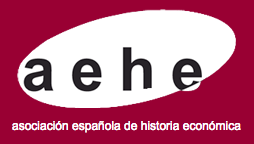The formation and development of a metallurgical district in Valladolid: c. 1842-1951
DOI:
https://doi.org/10.1016/j.ihe.2018.02.013Keywords:
Industrial district, Location factors, Metallurgica, N44, N63, N64, N83, N84, N94Abstract
This work proposes a long-term temporal journey to find out the causes that explain the development and importance of the metal-mechanic industry in Valladolid since the end of the 19th century. This city made good use of the advantages arising from its geographical location, the means of transport —Canal and Railways—, and the electrification process at the beginning of the century, to gradually distance itself from a development path that was excessively dependent on the agrarian sector. In this locality, many of the characteristics proposed by the literature on industrial districts are presented. Among others, they emphasise the predominance of small companies specialised in the manufacture of metallic products, the existence of subsidiary industries, an intense participation of local social institutions in the technical training of workers, and the non-codified knowledge. Since the 1940s, there has been a certain transformation in the supply of companies towards the manufacture of other products oriented to the material transport sector, especially the automobile. This process of transformation, which can be understood as an internal mechanism for adapting the district to external changes, has been common in other cases.Downloads
Downloads
How to Cite
Issue
Section
License
Aquellos autores/as que tengan publicaciones con esta revista, aceptan los términos siguientes
- Los autores/as conservarán sus derechos de autor y garantizarán a la revista el derecho de primera publicación de su obra, el cuál estará simultáneamente sujeto a la Licencia de reconocimiento de Creative Commons Reconocimiento-No comercial-Sin obra derivada 4.0 Internacional que permite a terceros compartir la obra siempre que se indique su autor y su primera publicación esta revista, y no permite hacer uso comercial de la misma ni tampoco obras derivadas.
- Los autores/as podrán adoptar otros acuerdos de licencia no exclusiva de distribución de la versión de la obra publicada (p. ej.: depositarla en un archivo telemático institucional o publicarla en un volumen monográfico) siempre que se indique la publicación inicial en esta revista.
Plagio y fraude científico
La publicación de un trabajo que atente contra los derechos de propiedad intelectual será responsabilidad de los autores/as, que serán los que asuman los conflictos que pudieran tener lugar por razones de derechos de autor. Los conflictos más importantes pueden darse por la comisión de plagios y fraudes científicos.
Se entiende por plagio:
- Presentar el trabajo ajeno como propio.
- Adoptar palabras o ideas de otros autores sin el debido reconocimiento.
- No emplear las comillas u otro formato distintivo en una cita literal.
- Dar información incorrecta sobre la verdadera fuente de una cita.
- El parafraseo de una fuente sin mencionar la fuente.
- El parafraseo abusivo, incluso si se menciona la fuente.
Las prácticas constitutivas de fraude científico son las siguientes:
- Fabricación, falsificación u omisión de datos y plagio.
- Publicación duplicada.
- Conflictos de autoría.





